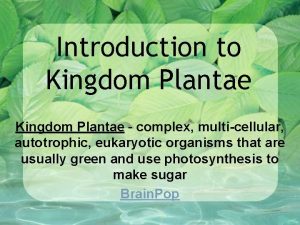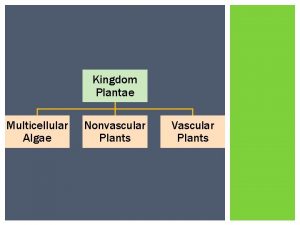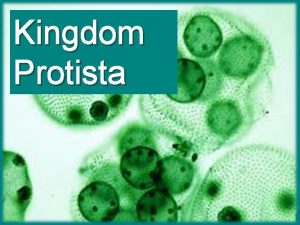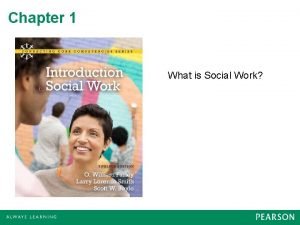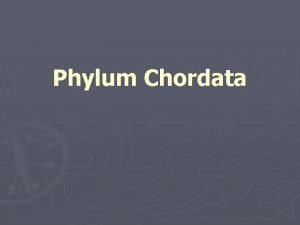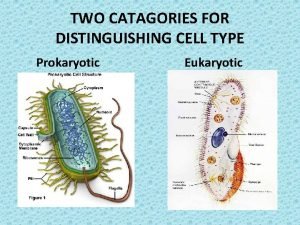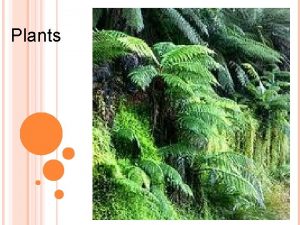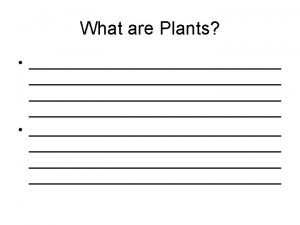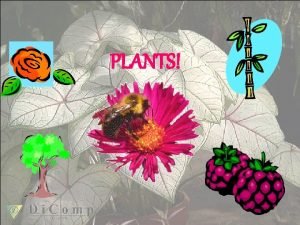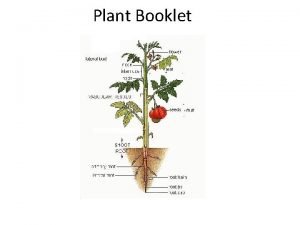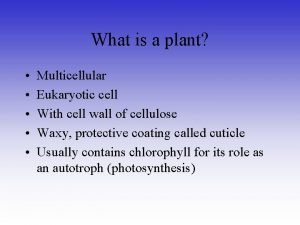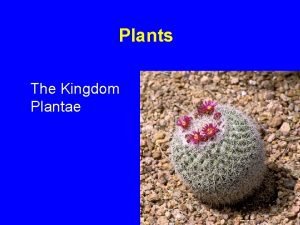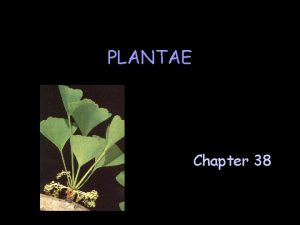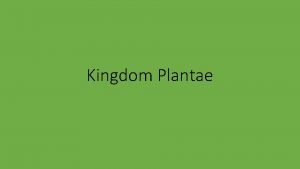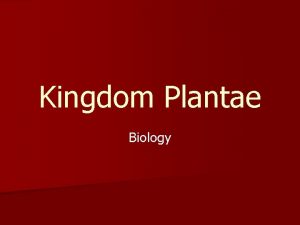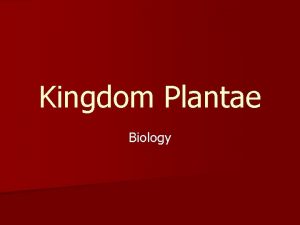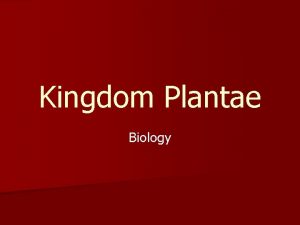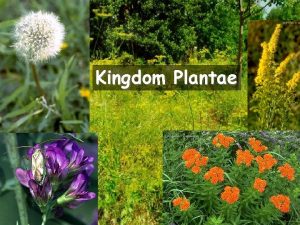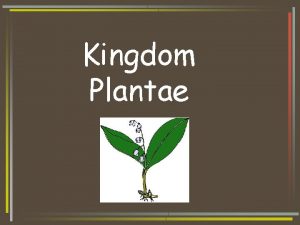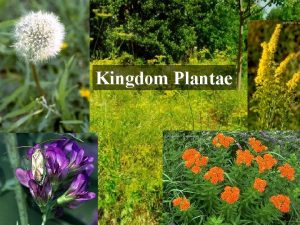Plantae Distinguishing Characteristics All plants are multicellular All












- Slides: 12

Plantae

Distinguishing Characteristics • All plants are multicellular • All plants are autotrophic • Some plants have specialized tissues called xylem & phloem • All plants reproduce sexually, and a few can also reproduce asexually • Very important to the balance in ecosystems because of their ability to create glucose, oxygen, and provide food & shelter to other organisms.

Method of Nutrition • Completely autotrophic – *Even the plants that are referred to as “carnivorous” are autotrophic. Carnivorous plants still photosynthesize for their glucose, and get minerals/vitamins from the insects and small animals that they breakdown.

Method of Reproduction • All plants reproduce sexually via sperm & egg • Some plants also reproduce asexually * Roots - shoots & suckers * Stems - stolons, runners, rhizomes, bulbs, corms, or tubers *Leaves - plantlets

Asexual Reproduction in Plants Bulbs Sucker Plantlets Stolon Tubers

Sexual Reproduction in Plants Non-vascular - Liverwort Vascular Flowering Plant

The Good and the Bad • • • Produce a large amount of oxygen for our biosphere Begin most food chains on our planet (exception – aquatic food chains that start with a photosynthetic protists) Provide shelter for other organisms Many have medicinal qualities that humans use Textiles & fabrics for clothing Building materials Breakdown & become soil Help prevent soil erosion Aesthetically pleasing Many are edible & are a direct way that humans can get energy (glucose) • Introduced species can become problematic * definition on next slide • Can cause disease/illness in humans and animals Poison Ivy = Toxicodendron radicans

Introduced/Invasive Species Plants non-native to an area (don’t naturally grow there; are brought in). Can grow rapidly because there are no natural competitors in the new area. Example ~ Kudzu

Four Separate Groups of Plants Non. Vascular mosses, liverworts, and hornworts Vascular ~ have xylem & phloem for transporting water & nutrients Seedless plants ferns, horsetails, and club mosses Seed plants Nonflowering Gymnosperms Flowering Angiosperms

Non Vascular Plants • Live in damp, dimly lit (=shady) areas. • Have no specialized tissues (xylem or phloem) or systems (i. e. roots, stems, or leaves) that move water & nutrients throughout the plant. • These plants depend on diffusion to move water between cells. & are therefore, very small. • These primitive plants do not make pollen (a protective covering around sperm), so they have to live in moist areas for reproductive purposes. Mosses Sphagnum flexuosum Hornworts Liverworts Monoclea forsteri Phaeoceros laevis

Seedless Vascular Plants • Because these plants have vascular tissue for transporting water and nutrients, they can be larger than the nonvascular plants. • Reproduce sexually. But still have to live in moist environments for sexual reproduction to occur because they do not make pollen. • Similar to their nonvascular counterparts, these vascular plants produce spores as a result of sexual reproduction. • Help form soil, help prevent soil erosion, help form communities in new ecosystems, some are edible by humans, vascular ancient ancestors created fossil fuels, and some are even used in dietary supplements, shampoos, and skin-care products. Horsetails Ferns Club Mosses

Seed Bearing Vascular Plants • Has vascular tissue and more complex systems than their primitive relatives (ferns, horsetails, & club mosses). • Can live in drier areas because the sperm cells of these plants are protected by pollen capsules. • Sexual reproduction in this group produces seeds instead of spores. • The pollen and seeds involved in the life cycle of seed bearing vascular plants allow for more genetic variation. Nonflowering Gymnosperms Flowering Angiosperms Lillum rubescens Pseudotsuga menziesii) Seeds are protected by cones (i. e. conifers, cycads, & ginkgoes) Monocots & Dicots Includes trees, shrubs, grasses, weeds, & many flowering plants For example: roses, apple trees, dandelions, corn, strawberries, tulips, & lilies)
 Plantae kingdom characteristics
Plantae kingdom characteristics Insidan region jh
Insidan region jh Plantae multicellular
Plantae multicellular Phaeophyta structure
Phaeophyta structure Distinguishing features of kingdom protista
Distinguishing features of kingdom protista Similarities between sociology and social work
Similarities between sociology and social work Distinguishing characteristics of chordates
Distinguishing characteristics of chordates Lysosome location
Lysosome location Are plants multicellular
Are plants multicellular Are plants multicellular eukaryotes
Are plants multicellular eukaryotes Multicellular plant
Multicellular plant Plant tissue
Plant tissue Plants are multicellular eukaryotes
Plants are multicellular eukaryotes


